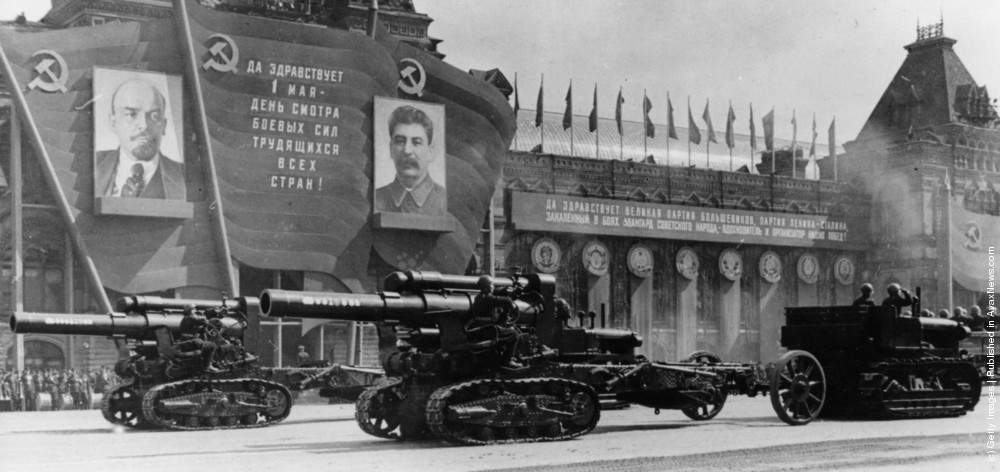If an American-backed world order is to continue to do good in the world, it will require the recognition of other powers' legitimate spheres of influence.
Holding the Fort on Intelligence: A Cold War Story
Spying Through a Glass Darkly: American Espionage against the Soviet Union, 1945-1946 is about a little-known intelligence unit whose continued activity after World War II invalidates the conventional wisdom that the wartime Office of Strategic Services had been disbanded upon the victory of the Allies. The authors construct a heroic portrait of this short-lived Strategic Services Unit (SSU), arguing that it managed to provide vital assistance in the face of great obstacles—one being the calling home of embedded agents after Germany surrendered, and the other a bureaucratic power struggle with the FBI, which refused to step into the intelligence-collection void unless it was made supreme over all U.S. intelligence.
The SSU was formed from the clandestine parts of the wartime OSS as a permanent peacetime spy group. Clearly the U.S. government had learned its lesson in 1941, when the country had no centralized intelligence service, and the Roosevelt administration had to cobble together the OSS on the fly. Never again would the government leave such a gap. Dependence on the FBI, after all, had yielded precious few results. The most J. Edgar Hoover could do during the war was capture Nazi agents, but this was accomplished well after they landed stateside.
David Alvarez, a politics professor at Saint Mary’s College in California, and the late Eduard Mark, an Air Force historian who specialized in intelligence, have brought to light new knowledge of the SSU. Armed with newly discovered archival documents, they are able to describe the secret war that the Americans waged behind the lines in Iron Curtain countries in 1945 and 1946, in collaboration with future NATO partners such as the British, French, and Italian secret services.
Along the way, the authors explode a cherished myth of the hard Left, during the Cold War and after: that the United States was spoiling for a conflict with its erstwhile ally Soviet Russia. The aggressive recruitment of Nazi intelligence officers (some of whom had been in Hitler’s SS) as U.S. assets supposedly proved America to be as fascist as the enemy the Allies had just defeated. This conclusion basically follows the point of view of leaders in the Kremlin who, aware of the recruitment, had mobilized by 1946 against the war-mongering “fascist” United States. Invalidating this narrative emerges as a central thesis of the book.
With the OSS gone and the creation of the Central Intelligence Agency still two years in the future, the SSU bridged a crucial period. Soviet troop strengths at this juncture, SSU operatives found, were five times what the forces of the United States had been during the war. This information corroborated President Truman’s belief that Russia was violating the Yalta agreements, which required American, British, and Soviet troop reductions.
The SSU, though, was far from being obsessively anticommunist. Its agents had other concerns. For example, when interrogating captured Nazi intelligence officers, SSU operatives were more interested in uncovering German knowledge of secret communications between Britain and the United States than any information about the Soviets. A case in point was that of General Reinhard Gehlen, long thought of as the poster boy for Nazi-U.S. collaboration. The fact was he failed to interest his captors in any knowledge he had of Soviet intelligence activities.
Studying the SSU’s actions indicates that the intelligence agencies in the 1945-47 period were still in flux about the Soviet Union, and that the secret war against the Russians that was waged by American intelligence did not begin, as has been claimed, before World War II even ended. The SSU, readers of this book will discover, were not eager for a fight nor were they stockpiling Nazis for use against the Soviets.
Alvarez and Mark are able to show that the Cold War for the United States really began in 1947—months, even years after Russia began cracking down on its satellites and making threatening gestures toward Iran.
Even if Russia and the Soviet Bloc it created were not yet the Cold War nemesis, hard facts about this almost hermetically sealed part of the world were needed. An understaffed SSU was able to at least partially penetrate the Iron Curtain countries and provide much-needed data. Most impressively, unlike the OSS, which had a number of Soviet moles within it, the SSU was never penetrated by Moscow Central. The organization used a vetting process that was more stringent than that of its mother organization. An individual had to have no ties whatsoever to extremist movements to be in it. (The OSS sought Spanish Civil War veterans who had fought fascism and knew behind-the-lines tactics; several, like Duncan Lee and Alfred Tanz, were working for the KGB.)
The CIA absorbed the SSU in 1947, and the agency modeled itself on this interim unit of spies. But more than that, the SSU had imparted an ideological legacy to the CIA that may surprise some. Long denounced as a fascist organization by the Grassy Knoll Left, the CIA was in actuality a liberal anticommunist agency, willing to play the “waiting game” on defeating the Soviet Union.



